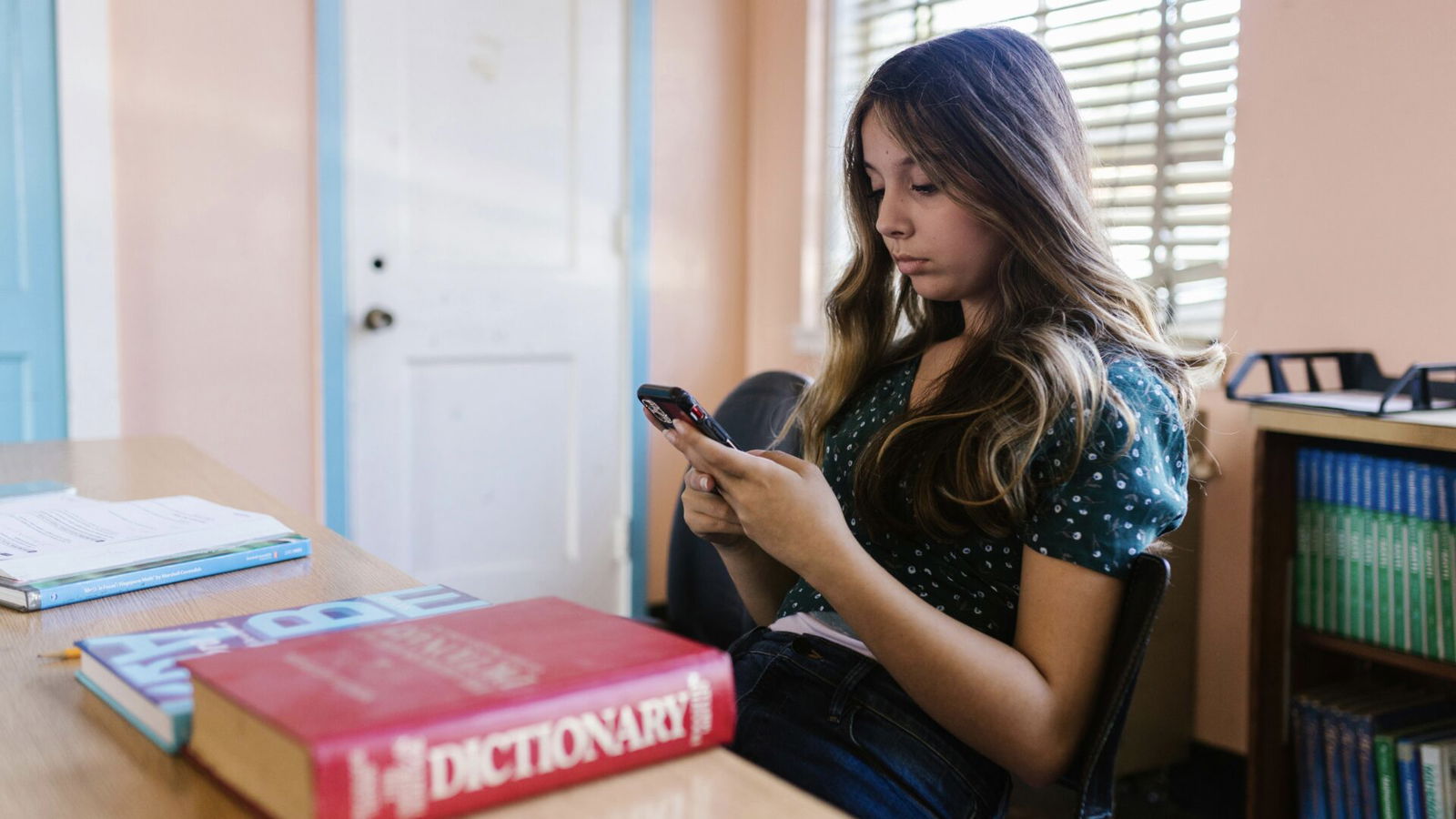
By Mallory Mattingly
Robinson Secondary School in Fairfax, Virginia, discovered that limiting cell phone usage among its students has helped them find success in the classroom.
Over the intercom in the morning, a daily reminder goes out to all the students to “make sure your devices are off and away.”
At that time, nearly all 4,000 students put away their cell phones and turned their attention to their teachers.
“The kids are onboard. The community is onboard, and we’ve had a lot of success,” school principal Tracy Phillips told TODAY.
The middle schoolers at Robinson Secondary School put their cell phones into a pouch, which prevents access to their phones throughout the day.
But high schoolers in the district get a little more freedom. When they enter their classroom, they have to drop their phones into a caddy before class begins.
“You see people talking to each other more and passing time before class starts instead of just scrolling on the phone and being on social media,” one student said of the change.
Students feel that their need for their cell phone “almost feels like an addiction” because “social media creates a toxic playing field for drama.”
“I think a lot of people’s actions are fueled by what they see on social media,” one student explained. “I think it is really like a kryptonite for how kids act.”
States such as Florida, Indiana, Ohio, South Carolina and Louisiana have also started to pass laws to either ban or restrict cell phones in K-12 schools.
In an interview with Hub, Annette C. Anderson, deputy director of the Johns Hopkins Center for Safe and Healthy Schools, explained why it is harmful for students to have “access to a potentially addictive form of media at school via their cell phones.”
Related: Is Everyone in Favor of School Cell Phone Bans?
“Let me start by saying this: Most parents gave their kids cell phones so they could have immediate access to communicate,” Anderson began. “In this era of school shootings, phones became a matter of safety — and a matter of coordinating the busy schedules and lives of modern families. It had nothing to do with giving kids access to video games and platforms like Instagram and Snapchat. That was an unintentional consequence.”
However, parents and school teachers now see the harmful effects of cell phone usage.
“Some students take and post inappropriate videos,” Anderson said. “Fights in schools go viral because students record and then post footage online. And students are distracted in class because they’re addicted to the apps that beg for their attention.”
She continued: “Smartphones are also changing how our young people pay attention. They’re distracted, and it now seems like practically everyone has ADHD because they’re being constantly bombarded with images, sounds, and all kinds of actions that are potentially interfering with their capacity to concentrate in school.”
Phones do more than just distract, though. They can mentally and physically harm kids, and Health and Human Services Secretary Robert F. Kennedy Jr. talked about the link between phone usage and depression among teens in an interview with FOX & FRIENDS.
He also noted that cellphones “produce electromagnetic radiation, which has been shown to do neurological damage to kids when it’s around them all day, and to cause cellular damage and even cancer.”
Will in-school cell phone bans cure the mental health crisis plaguing America’s youth? Only time will tell, but schools that have enacted such rules have already seen a significant boost in student performance and behavior in the classroom and hallways.
Read Next: America’s 2nd-largest School District Bans Cellphones and Social Media



 - Content:
- Content: 
 - Content:
- Content: 
